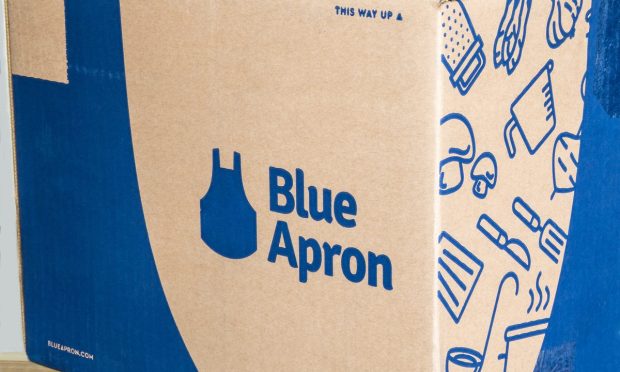Blue Apron CEO Notes Shift From Playing Catch-up to Building Toward the Future

2021 proved a difficult year for meal kit subscription companies, with consumers’ return to lives away from home counteracting the boost they saw during quarantine. Now, after a period of difficulty, New York City-based meal kit company Blue Apron might be coming out of the woods.
For one thing, the company has more capital at its disposal. A week ago (May 2), the company announced that it had received a $70.5 million capital infusion in the form of investments and refinancing.
Related news: Blue Apron Announces $70M in Investments, Refinancing
Blue Apron President and CEO Linda Findley spoke with PYMNTS in an interview following the release of company’s first-quarter 2022 results Monday (May 9) about how these new funds are helping the company shift its focus from short-term measures to long-term growth.
“We were a capital-constrained business and we needed to, I would say, aggressively catch up from a competitive standpoint when it came to our product set, and so that’s what we’ve been doing the last two and a half years — really focusing on driving revenue per customer, orders per customer, and AOV,” she said. “With the capital raise that we did in the fall, and of course now we’ve got additional capital that came into the business earlier this week, we now have the flexibility and the ability to lean into marketing and start growing customers on top of those strong key customer engagement levels.”
The Walmart Boost
Also Monday, the company announced the launch of a Blue Apron storefront on Walmart.com selling meal kits that can be purchased piecemeal rather than as part of a regular subscription. The move follows a similar launch in December 2021, when the company announced a partnership with Amazon to order Blue Apron meal kits (also without a subscription) by voice via Alexa-enabled devices.
“This is a model that we plan to continue to expand where we can have that continued benefit of using our existing facilities, our existing pricing power and being able to reach a much broader audience because Walmart.com has millions of monthly active users,” Findley said.
Certainly, working with Walmart gives the company access to a huge portion of all U.S. consumers. In fact, research from PYMNTS’ January study Decoding Customer Affinity: The Customer Loyalty to Merchants Survey 2022, created in collaboration with Toshiba Global Commerce Solutions, which featured the results of a census-balanced survey of more than 2,000 U.S. consumers in late fall 2021, found that 28% of all shoppers had purchased groceries from the retailer in the previous 30 days.
Get the full report: Decoding Consumer Affinity: The Customer Loyalty To Merchants Survey 2022
“We’ll always have a subscription at our core and our customers who use our subscription service find it incredibly convenient,” said Findley, “but there’s a huge portion of the population that really loves the concept of meal kits … but does not necessarily want to be locked into a subscription.”
The Price Is Right
While meal kits have a reputation for being pricier than other at-home cooking options, Findley argues that inflation could actually work in Blue Apron’s favor.
According to her, Blue Apron research finds that, for the quality of the company’s ingredients, even with recent price changes, its meal kits are actually a lower-cost option than either grocery shopping or ordering from a restaurant. The company works directly with suppliers, which, Findley states, allows it to keep prices lower than if it were going through intermediaries.
See also: Blue Apron CEO: Shortening the Supply Chain Can Boost Meal Kit Profitability
“That’s proven to be very successful for us, and we continue to manage our costs so that we don’t have to put that burden on the customer,” she said.
An April news release regarding the latest data from the U.S. Bureau of Labor Statistics (BLS) Consumer Price Index (CPI) showed that in March, food away from home (i.e., grocery) prices increased 1.5% over February and 10% year over year. Additionally, food away from home (i.e., restaurant) prices increased 0.3% over February and 6.9% over 2021.
Cooks in the Kitchen
Findley argued that, in the past few years, the qualities that consumers are looking for in a meal kit have changed. Where once the model was seen as a way to get food needs met more conveniently, eliminating a few trips to the grocery store, now consumers are looking to the category both to reduce food waste and to be exposed to novel ways of cooking, she said.
Granted, Blue Apron is still making some moves toward convenience, adding 15-minute breakfast recipes and add-on prepared meals. Still, Findley said many consumers are also looking to use meal kits go deeper into their home cooking routines.
“We call it the Blue Apron plus one, which is … something that unlocks that discovery part of your brain, that creative part of your brain which is such an important part of day-to-day life,” she said. “That part, I think is incredibly valuable to people.”
